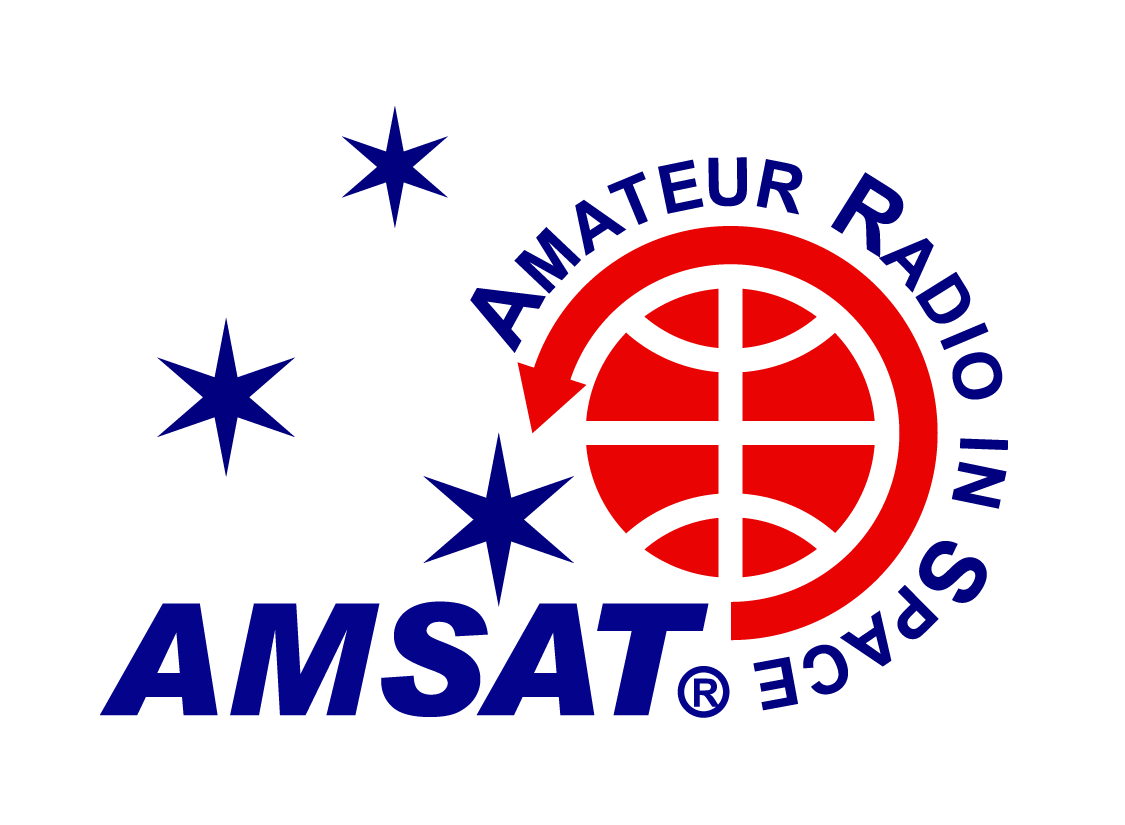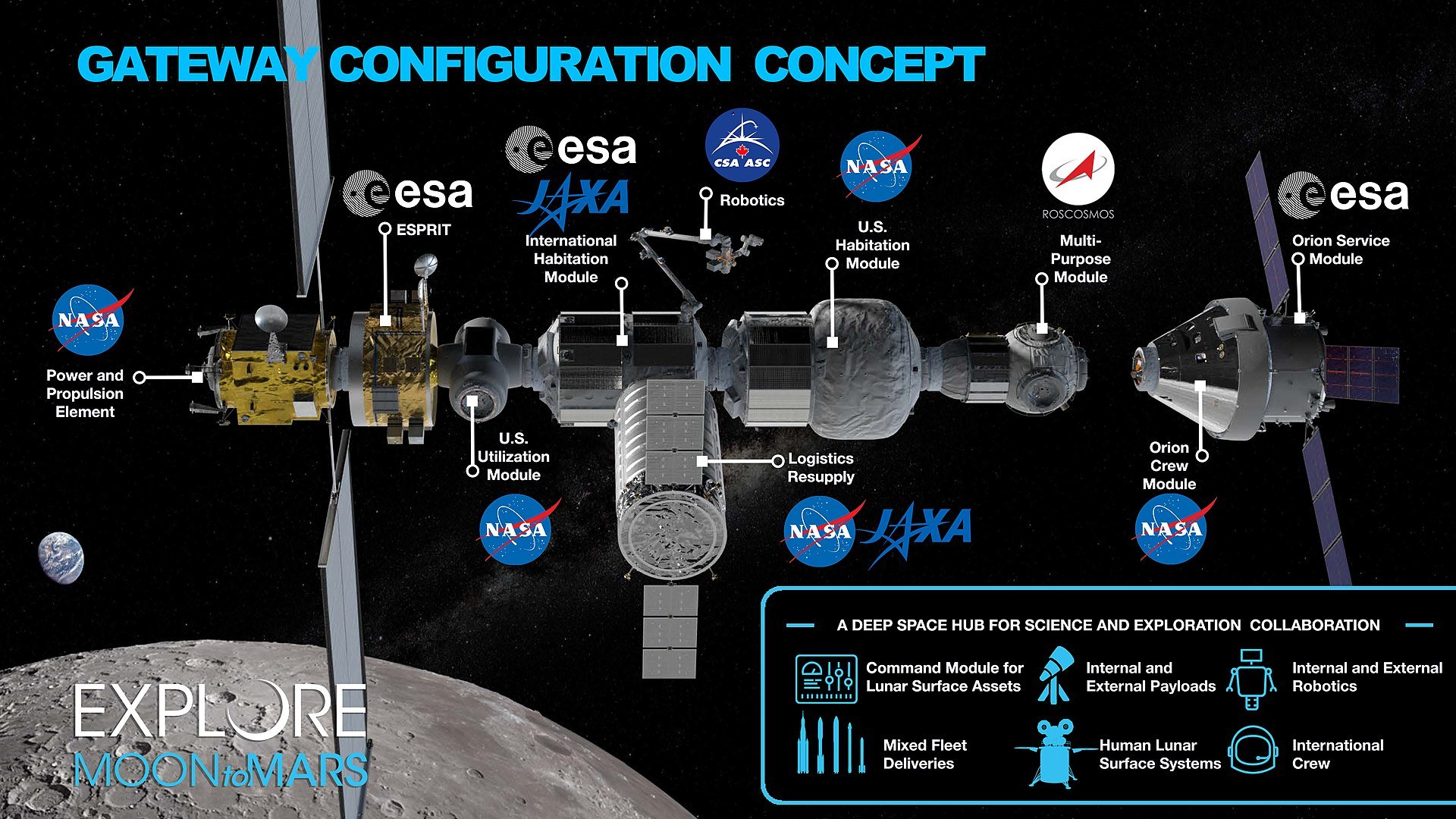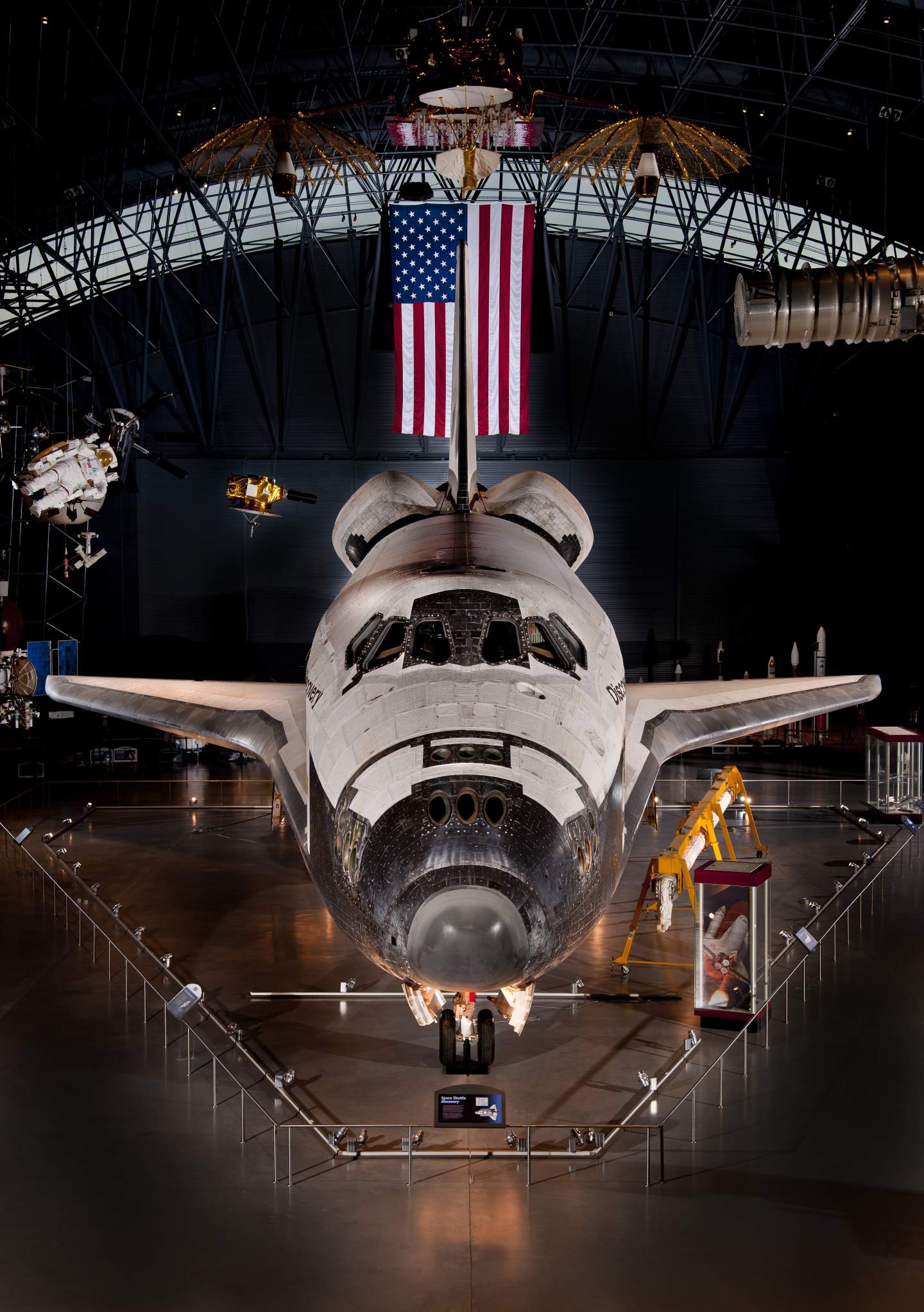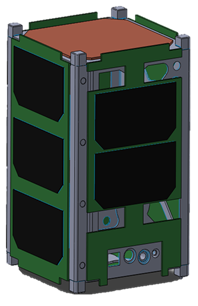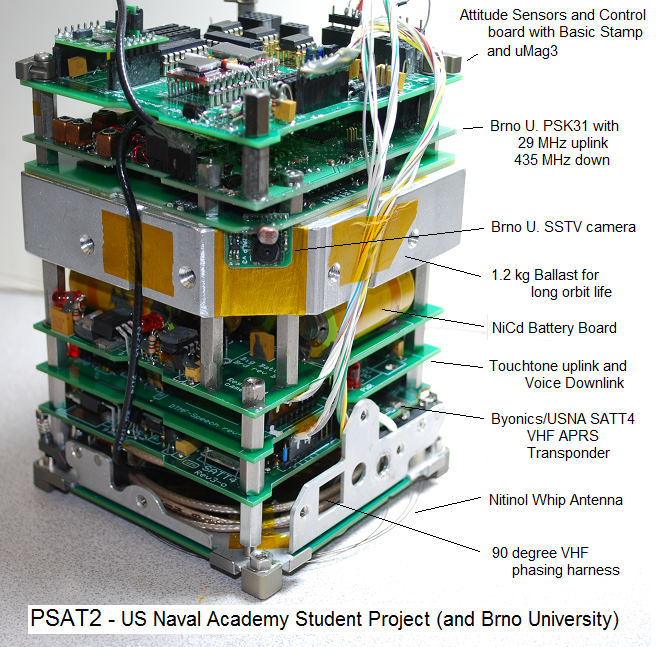AMSAT NEWS SERVICE
ANS-237
The AMSAT News Service bulletins are a free, weekly news and information service of AMSAT North America, The Radio Amateur Satellite Corporation. ANS publishes news related to Amateur Radio in space including reports on the activities of a worldwide group of Amateur Radio operators who share an active interest in designing, building, launching and communicating through analog and digital Amateur Radio satellites.
The news feed on https://amsat.org publishes news of Amateur Radio in space as soon as our volunteers can post it. Please send any amateur satellite news or reports to: ans-editor at amsat dot org. You can sign up for free e-mail delivery of the AMSAT News Service Bulletins via the ANS List; to join this list see: https://www.amsat.org/mailman/listinfo/ans
In this edition:
- Second Call for AMSAT 2019 Symposium Papers
- Volunteer Opportunity: ANS Rotating Editors Needed
- American Communications Committee Guards 5GHz and 47 GHZ Bands
- SatNOGS Basics to be Featured at 2019 ARRL-TAPR Conference
- New French CEPT paper still seeks 144-146 MHz for Aeronautical
- Another Threat to the Amateur Radio 23cm Band
- New 144-146 Web SDR at Goonhilly Available
- AMSAT-LU Announces Marine Buoy Testing and Tracking Project
- Upcoming Satellite Operations
- ARISS News
- Satellite Shorts from All Over
Second Call for AMSAT 2019 Symposium Papers
This is the second call for papers for the 2019 AMSAT-NA Annual Meeting and Space Symposium to be held on October 18-20 at the Hilton Arlington, 950 North Stafford Street, Arlington, Virginia.
Proposals for papers, symposium presentations, and poster presentations are invited on any topic of interest to the amateur satellite community. We request a tentative title of your presentation as soon as possible, with final copy to be submitted by September 23 for inclusion in the printed proceedings. Abstracts and papers should be sent to Dan Schultz at n8fgv at amsat dot org.
[ANS thanks Dan Schultz N8FGV for the above information.]
The July/August edition of Apogee View, a comprehensive update on
AMSAT’s activities by AMSAT President Joe Spier, K6WAO, has been
posted to the AMSAT website at: https://www.amsat.org/apogeeview/
Volunteer Opportunity: ANS Rotating Editors Needed
If you’re open to volunteering to help AMSAT this is your chance! We have openings for a few volunteers willing to help as an AMSAT News Service rotating editor.
Our editors work on a rotating schedule with each taking turns as the current week’s news editor. Using input received from members, the amateur radio community, officers, plus our other editors your job is to assemble the AMSAT News Service bulletin for your week. (A template is provided to help you format the message.)
If you can help contact our Senior News Service Editor, Mark Johns, K0JM via his e-mail: k0jm at amsat dot org.
American Communications Committee Guards 5GHz and 47 GHZ Bands
CITEL, the telecommunications committee of the Organization of American States, concluded a week of meetings on Friday, August 16 in Ottawa.
The meeting tries to establish common positions on agenda items which will be acted upon during the World Radiocommunication Conference (WRC-19) which begins on October 28 in Egypt.
Among the principal highlights of the week’s activities for Radio Amateurs:
For 5 GHz, twelve member states supported no change (NoC) to the existing allocations in 5725-5850 MHz and eighteen member states supported no change in the range 5850-5925 MHz as opposed to using these frequency ranges for higher-power and outdoor wireless access points. The Amateur secondary allocation in Canada is 5650-5925 MHz.
Regarding 47 GHz, Amateurs were successful in having Mexico remove the frequency segment 47–47.2 GHz from their proposal to study several additional frequency ranges for the Fixed Satellite Service. Also, eleven member states supported no change (NoC) to the existing (Amateur Primary) allocation in 47–47.2 GHz. Specifically, not to be considered for sharing with 5G international mobile telephony.
The French proposal to consider 144–146 MHz for sharing with the aeronautical mobile service was not on the CITEL agenda. It will be considered next in a CEPT meeting in late August.
[ANS thanks Bryan Rawlings, VE3QN and AMSAT-UK for the above information.]
The digital download version of the 2019 edition of
Getting Started with Amateur Satellites is now available as
a DRM-free PDF from the AMSAT Store. Get yours today!
https://tinyurl.com/ANS-237-Getting-Started
SatNOGS Basics to be Featured at 2019 ARRL-TAPR Conference
Details on the current roster of presentations and speakers for the 2019 ARRL-TAPR Digital Communications Conference (DCC) have been announced. The conference takes place September 20 – 22 at the Detroit Metro Airport Marriott Hotel.
Among the many topics announced, the Sunday Seminar will be “Learn to build and operate your own SatNOGS ground station,” presented by Dan White, AD0CQ, and Corey Shields, KB9JHU. This seminar will be a hands-on, progressive tutorial, starting with the basics of a SatNOGS (Satellite Networked Open Ground Station) and ending with the development of telemetry decoders.
Familiarity with Linux and the Raspberry Pi platform is beneficial but not required. The presenters also will interact with SatNOGS web services and discuss other technologies in use such as Python, GNURadio, InfluxDB, Kaitai Structs, and Grafana. Participants should gain an understanding of how SatNOGS applications work, how to use them, and a basic familiarity with the technologies behind the scenes, should they wish to contribute to the development of the project. Participants should bring a laptop and sign up for a free account.
See all the DCC topics announced at https://tinyurl.com/ANS-237-DCC-Topics
[ANS thanks the ARRL for the above information.]
New French CEPT paper still seeks 144-146 MHz for Aeronautical
The French administration has renewed its attack on the Amateur Radio 144-146 MHz band ahead of a key CEPT ECC CPG meeting in Ankara, August 26-30.
In a paper to be considered at the conference the French Administration says it is not at this time seeking Primary status for the Aeronautical Mobile Service in 144-146 MHz, however, their intent is still that the Aeronautical Mobile Service should share the amateur 2 meter band.
It is clear where such sharing would inevitably lead, amateur operation in the band would only be tolerated if there were no interference to Aeronautical Mobile. Radio Amateurs might be subject to heavy restriction and low EIRP limits.
We can get on idea of France’s long term intent for 144 MHz from their attitude to the 1240-1300 MHz band. It was initially said the Galileo constellation could amicably share this allocation and amateur operation could continue but now France says “unregulated use of the band 1240-1300 MHz by the amateur service is a serious source of harmful interference to RNSS receivers.”
[ANS thanks AMSAT-UK for the above information.]
Another Threat to the Amateur Radio 23cm Band
A joint paper by France, Lithuania, Malta, Slovenia and The Netherlands for the European Conference of Postal and Telecommunications Administrations (CEPT) Conference Preparatory Group (CPG) meeting on August 26-30, attacks the continued use by Radio Amateurs of its 1240-1300 MHz band.
This is the final CEPT CPG meeting in preparation for the ITU World Radiocommunication Conference 2019 (WRC-19) to be held October 28 to November 22. This conference will define the Agenda Items for WRC-23.
Paper AI10 – Proposal on AS-RNSS says: Galileo is close to full operational capability and its E6 signals in the band 1260-1300 MHz will support new services such as the free-to-use Galileo High Accuracy Service, and also robust authentication, expected to be used by a variety of applications including autonomous vehicles and the Internet of Things (IoT).
Several cases of interference to Galileo E6 receivers from amateur service emissions have occurred in the recent past, sometimes at significant distance, and have taken several hours or even days to be eliminated. There is therefore a serious concern that as Galileo E6 receivers are deployed and used more widely, cases of interference from amateur stations will rapidly grow in number.
A WRC-23 agenda item is necessary to address this issue because:
- Unregulated use of the band 1240-1300 MHz by the amateur service is a serious source of harmful interference to RNSS receivers. This is demonstrated by experience.
- The number of Galileo receivers in 1260-1300 MHz will increase dramatically, and interference cases will multiply if not addressed timely.
- Galileo and other RNSS systems will deploy at global scale, and interference scenario between amateur emissions and RNSS receivers include cross-border cases. The issue is therefore of international nature and is to be addressed in the ITU framework.
- Galileo is a major European asset, and a decision at WRC-23 is essential to be compatible with the road map of deployment of Galileo receivers in this band.
[ANS thanks AMSAT-UK for the above information.]
The Fox-In-A-Box Raspberry Pi SD card for setting up a Raspberry Pi-based
telemetry station for the Fox-1 satellites now supports the Raspberry Pi4.
Get yours today on the AMSAT Store!
https://amsat.org/product/fox-in-a-box-raspberry-pi-sd-card/
New 144-146 Web SDR at Goonhilly Available
AMSAT-UK and the British Amateur Television Club have announced the availability of a new 144-146 MHz Web-based Software Defined Radio installation at Goonhilly.
This is being provided in collaboration with Goonhilly Earth Station where it is kindly hosted alongside the existing receiving equipment for the amateur radio transponders on the Qatar-Oscar-100 (QO-100/Es’hail-2) geostationary satellite.
It shares the same Turnstile antenna that is used for the reception of the AO73, EO88 & JO97 CubeSats.
Being located in the far South West of the UK, it is anticipated the SDR will be useful for early Acquisition of Signal (AOS) of 144 MHz downlinks from amateur satellites and the International Space Station (ISS). Additionally it can be used for reception of tropospheric signals from the south – the Spanish beacon ED1ZAG on 144.403 MHz has been already been heard on the system.
The new 144 MHz band WebSDR is available at https://vhf-goonhilly.batc.org.uk/
The AMSAT-UK / BATC 10 GHz WebSDR for QO-100 is still available at https://eshail.batc.org.uk/
[ANS thanks AMSAT-UK for the above information.]
AMSAT-LU Announces Marine Buoy Testing and Tracking Project
AMSAT-LU plans to test their marine buoy system on August 31 in the Lagoon of Pehuajó. The city is 375 km from Buenos Aires and 500 km from Mar del Plata, Argentina. Operational nets are planned to be on 144.930 MHz FM and 7.095 MHz LSB.
The buoy is powered with batteries and solar cells for long-term operation using APRS and WSPR transmissions:
- WSPR 14095.6 MHz) 900 mW call sign LU7AA
http://lu7aa.org.ar/wspr.asp - APRS call sign LU7AA-8 beacons every 2 minutes
http://aprs.fi?call=lu7aa-8
Solar power equipped super pressure balloons also transmitting WSPR packets are planned to be tested.
The buoy is planned for deployment in the Atlantic Ocean next summer. Land-based test transmissions from Buenos Aires are already operational.
AMSAT-LU has posted details at: Details: http://amsat.org.ar/?f=boya
[ANS thanks AMSAT-LU for the above information]
Upcoming Satellite Operations
Help Celebrate AMSAT’s 50th Anniversary with these “W3ZM on the Road” Operations:
| Call | Date | State | Grids | Operator | Mode |
|---|---|---|---|---|---|
| W3ZM/7 | Aug 24-25 | AZ | DM41, DM51/52 | KF7R | FM & Linear |
| W3ZM/5 | Aug 29 | MS | EM43 | KE4AL | FM & Linear |
| W3ZM/5 | Sep 10 | LA | EL49 - EM40 | KG5GJT | FM |
- N7MJ Roving 11 State Tour – WY, NE, IA, IL, KY, TN, AR, OK, TX, NM, AZ, August 25th – September 9th, 2019.
Jack N7MJ is heading out (in his Vette) on a 2 weeks road trip from Cheyenne, WY to the big 25th Anniversary Celebration of the National Corvette Museum in Bowling Green, KY, (August 28-31). Then he will head through TN to AR (EM34) for a family gathering 9/3-4, the another family gathering 9/4-5 in Atoka, OK EM14/24). With the partying over, down through TX and NM and end up in Chandler, AZ. FM only. - Way Up in the Northeast (GN27, GN26, GN37) Aug 26 – Sept 7, 2019
Chris, VE3FU will be in GN27 August 26-30 and will try to make a trip to GN26, possibly on the GN26/27 line. He will be in GN37 again) August 30-September 7. Chris will be operating as VO2AC/1 and try to announce operating times on Twitter as far ahead as possible. https://twitter.com/ChrisVE3FU. - Road to Oklahoma (EM52, EM43/44, EM34, EM35, EM25, EM26) Aug 29 – Sep 1, 2019
Robert KE4AL is heading to Oklahoma (EM26). Plan is to stop in EM52 Thursday (1800 ish UTC) and get on the air from Mississippi as W3ZM/4. Next up will EM43/44 line around 2330Z and spend the night in EM34. Friday will be a trip up through Little Rock onto I-40 with stops in EM35 and EM25. Follow KE4AL on aprs.fi and keep an eye on Robert’s Twitter feed for specific pass times. https://twitter.com/KE4ALabama - Mississippi (EM42) Aug 31 – Sep 1, 2019
Brian, KG5GJT is taking the Casita and his Mamacita on a little trip to EM42. This is a family vacation, so Brian will Tweet passes before they come up. Watch https://twitter.com/KG5GJT - Peru – August 31 – September 7, 2019
Tony, KD8RTT will be in Peru Saturday night, August 31 and leave on Saturday, September 7. FM passes, mainly AO-91 and AO-92, vacation schedule permitting. Tony is not exactly sure what days/times he can operate yet, but he’ll try to tweet before he gets on any passes. https://twitter.com/kd8rtt - AM1SAT (All Grids in Spain) September 9-15, 2019
AMSAT-EA will be transmitting its special call AM1SAT via all active satellites from September 9th to September 15th as part of the V RadioHam Fair IberRadio 2019 activities. IberRadio is the biggest event for the ham community in SouthWest Europe and will open doors September 14th and 15th . Learn more about IberRadio at http://www.iberradio.es. The AM1SAT call sign will be active from a minimum of 14 different grids during that time to help satellite operators to collect as much EA locators as possible. As part of this activity and in order to promote the participation, AMSAT-EA is sponsoring the AM1SAT Special Award in two categories, Silver and Gold. More info available at https://www.amsat-ea.org/ and as a pdf at https://tinyurl.com/ANS-237-AM1SAT-Award.
[ANS thanks Robert Bankston, KE4AL for the above information.]
ARISS News
There are no scheduled school contacts to report at this time.
AMSAT and ARISS are currently supporting a FundRazr campaign to raise
$150,000 for critical radio infrastructure upgrades on ISS. The upgrades are
necessary to enable students to continue to talk to astronauts in space via
Amateur Radio. We have reached a great milestone with $33,250 raised or about
17% towards our goal. This would not have been possible without your
outstanding generosity!!
For more information and to DONATE TODAY visit:
https://fundrazr.com/arissnextgen?ref=ab_e7Htwa_ab_47IcJ9
Shorts from All Over
- A0-40: A GPS Pioneer
The GPS III SV02 satellite launched on Thursday, August 22nd, 2019. GPS III SVs are designed to introduce new capabilities to meet higher demands of both military and civilian users. AMSAT-OSCAR 40 was launched on November 16, 2000. It carried a GPS experiment that helped to validate above-the-constellation use of GPS and influenced the design of the Block III GPS satellites. For more details see https://tinyurl.com/ANS-237-AO-40. - Ruth Willet KM4LAO Joins the ICQ Podcast Team
Keen amateur satellite user Ruth Willet KM4LAO @KM4Ruth has joined the ICQ Podcast team. The latest podcast covers the news that AMSAT member 12-year-old Marissa Robledo W4AQT is the recipient of the 2019 ARRL Alabama Outstanding Youth Ham Award. Hear it at https://tinyurl.com/ANS-237-Ruth-Willet [ANS thanks icqpodcast.com and AMSAT-UK for the above information.] - TAPR Announces Funds for Student Attendance at DCC
Thanks to a generous grant from Amateur Radio Digital Communications, TAPR is able to fund attendance at the DCC for a limited number of students. To nominate a deserving student for an all-expense-paid trip to the DCC, submit a nomination at taproffice at tapr dot org.
[ANS thanks the ARRL for the above information.] - Ideas sought for the next FUNcube satellite
In November the FUNcube-1 CubeSat will have been in orbit for 6 years and the FUNcube team are now soliciting suggestions for the next satellite. The team are looking for suggestions for:+ Conformation of the satellite (2U / 3U)
+ Orbit (LEO / MEO)
+ STEM Outreach
+ Amateur Radio Payloads
+ Research PayloadsPlease email your ideas to funcube-next at funcube dot org dot uk.
[ANS thanks AMSAT-UK for the above information.] - NASA Releases Study On Commercial Space Economy
New insights from companies in the growing space economy are helping NASA chart a course for the future of commercial human spaceflight in low-Earth orbit.Input the companies provided to NASA as part of the studies will inform NASA’s future policies to support commercial activities that enable a robust low-Earth orbit economy.NASA selected twelve companies to complete studies about the commercialization of low-Earth orbit and the International Space Station, assessing the potential growth of a low-Earth orbit economy and how to best stimulate private demand for commercial human spaceflight Read the complete story at https://tinyurl.com/ANS-237-Report. [ANS thanks SpaceRef-Business for the above information.]
In addition to regular membership, AMSAT offers membership in the President’s Club. Members of the President’s Club, as sustaining donors to AMSAT Project Funds, will be eligible to receive additional benefits. Application forms are available from the AMSAT office.
Primary and secondary school students are eligible for membership at one-half the standard yearly rate. Post-secondary school students enrolled in at least half time status shall be eligible for the student rate for a maximum of six post-secondary years in this status. Contact Martha at the AMSAT office for additional student membership information.
73 and Remember to help keep amateur radio in space,
This week’s ANS Editor,
Frank Karnauskas, N1UW
n1uw at amsat dot org
